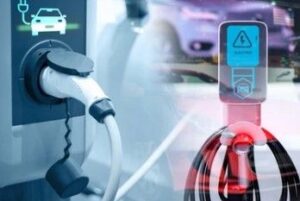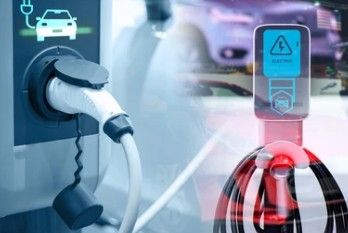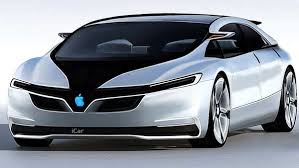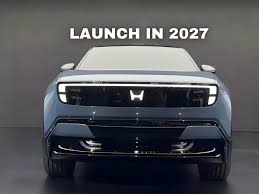The world has now turned to renewable energy sources, making the electric vehicle the new vanguard of change in the automotive industry. However, since going green is the new trend in the supply of energy sources globally, the adoption of EVs is gaining attention in the fight against climate change.
- Current State of EV Adoption in India
- Learning from Global Best Practices in EV Financing
- Norway’s Incentive-Driven Model
- China’s Fleet-Focused Financing
- The U.S. Battery Leasing Programs
- Germany’s Workplace Charging Incentives
- The Netherlands’ Pay-As-You-Drive Model
- The Role of EV Financing in India
- Lowering Upfront Costs
- Boosting EV Fleet Adoption
- Inclusive Financing for Underserved Markets
- Supporting Charging Infrastructure
- Incentive-Linked Financing
- Emerging Trends in EV Financing for 2025
- Case Studies and Success Stories
- Challenges to Address
- Final Thoughts
The prospects of EVs in India are huge, given India’s planned Net Zero goals and increasing interest in sustainable transportation. However, the challenge of affordability has remained a bête noir of the general adoption of EVs across the globe despite government management and increasing sensitization.
This is where innovative EV financing solutions can best perform the visionary role of boosting the sales of EVs in India by 2025.
Current State of EV Adoption in India
India has seen a gradual shift with more and more consumers adopting EQ recently with the help of certain Government policies like FAME and state subsidies. However, the progress of EVs in India is still concerning, and overall, electric vehicles represent merely 2% of the total vehicle sales.
The main concerns regarding the ongoing EV market in the country include high purchase costs, inadequate number of charging stations, and inadequate availability and affordability of EV financing.

To learn more about the new electric automobiles, you can read it here.
These hurdles are not easy to deal with, but the global shift is already underway across multiple dimensions, and EV financing needs to become a key enabler for reducing the cost of electric vehicles in terms of their affordability and availability to a much larger audience.
Learning from Global Best Practices in EV Financing
Many countries today are implementing unique finance models for EVs that can be deemed useful to India. With the right implementation of good policies in countries like Norway, China, the United States, and Germany, India can speed up its electric vehicle market and deliver a sustainable mobility solution.
Norway’s Incentive-Driven Model
Currently, Norway has the highest market share of EV sales globally, as about 58% of newly sold cars are electric. The country simultaneously introduces high purchase incentives and such bonuses as tax exemptions and lower interest rates on car loans for EVs.
Third, there are privileges for owners of electric vehicles: free parking and lower toll charges, which make electric cars even more financially advantageous. This could allow passwords to be adopted by countries such as India, which has cities such as Bengaluru and Mumbai, to adopt supportive measures that include tax credits and cheap credits alongside other incentives in a bid to popularize EVs.
China’s Fleet-Focused Financing
China has also achieved viable large-scale financing models that have targeted public transport and logistics vehicle conversions. A level of subsidies for EV procurement goes together with affordable leasing solutions.
For instance, Shenzhen went ahead and released its entire bus fleet to electric vehicles, thereby reducing a lot of money that used to be spent on fuel costs, etc. Indian cities like Delhi and Chennai could do the same, using EV financing of EVs to level up the population’s logistics and minimize the ill effects of commercial fleets.
The U.S. Battery Leasing Programs
Battery leasing has emerged as a critical portfolio implementer in the U.S. for bringing down the cost of ownership of electric vehicles significantly. EV buyers pay monthly charges for the battery consumption, which reduces the amount that a buyer has to pay upfront for the battery, greatly reducing the cost of an EV.
Appointing similar battery leasing models in India could bring affordable electric cars to consumers across the middle-income level in places such as Pune and Hyderabad.
Germany’s Workplace Charging Incentives
Germany encourages employers to provide workplace charging for electric cars by subsidizing a low-interest loan or a grant to employees to facilitate the conversion to electric cars.
Likewise, in India, the concept of charging stations at tech city companies like Bengaluru and Gurugram would serve to increase take rates as several professionals would then have access to charging stations at their workplaces.
The Netherlands’ Pay-As-You-Drive Model
In the Netherlands, one of the most popular options is to pay as you drive. This allows the repayment schedule to be tied to the use of the vehicle, thus providing lower costs for operating EVs for both private individuals and fleet managers.
India could implement this model for commercial fleets that are plying in cities such as Ahmedabad and Surat because businesses can incur low financing costs since automobiles are frequently used.
The Role of EV Financing in India
The EV financing of electric vehicles is one of the most efficient methods to make the usage of electric cars widespread. Here’s how it can drive EV adoption in India in 2025:
Lowering Upfront Costs
Probably the greatest barrier to adopting electric vehicles is the fact that the cost of EVs has been significantly higher than that of ICE vehicles. Incentives like low-interest subsidies, no down payment, and long terms of repayment can make it easier for buyers.
They may go a long way in making EV adoption possible for middle-class car buyers, thus giving the electric vehicle market a major boost.
Boosting EV Fleet Adoption
Prime consumers of vehicle fleets such as logistics, ride-hailing, and delivery services, which are expected to be prominent in the future, also provide a good market for Electric vehicles in India.
It is well understood that fleet owners must transition to electric vehicles, but providing personalized EV financing solutions for acquisition and revised financing choices like lease-to-own models, price break arreglo through purchase volume, and low-interest credit makes this possible.
The EV fleet market in India is predicted to rise by 25% by 2025, based on creative solutions that exist to finance EVs.
Inclusive Financing for Underserved Markets
Consequently, one could expect that regions that rarely utilize traditional credit facilities, such as rural and semi-urban zones, are beneficial for EV usage. Through the use of non-conventional credit scoring techniques and big data, FI’s are able to expand credit facilities to underbanked areas, thus enhancing financial inclusion.
Some pilot launches in recent years, such as Patna and Kanpur, have revealed that up to 15% of EV adoption boost has resulted from micro-financing, thus a way forward to closing the rural-urban divide.
Supporting Charging Infrastructure
Yes, financing is not just in automobiles but also in setting up the right structures that will facilitate the uptick in EVs. Through financing avenues such as lending and subsidies towards charging infrastructure, more financial institutions can support the increase in the EV ecosystem.
Focused funding ensured the establishment of 500 public charging stations in 2023 in Gujarat and an 18 percentile improvement in the usage of EVs similarly, as evidenced by Bengaluru and Pune, which have experienced a surge in charging infrastructure adoption and penetration to the consumers.
Incentive-Linked Financing
This helps match financing products to the government’s incentives and subsidies, where it befits buyers to get bestуж from cost-cutting. Other financing plans for EVs include the FAME initiative, which helps subsidize the prices of EVs that are retailing in the market.
For instance, more than 60% of EV buyers in the year 2024 used subsidy-based loans, especially in metro cities, including Delhi and Hyderabad, for a higher rate of EV sales.
Emerging Trends in EV Financing for 2025
As the market for electric vehicles matures, several key trends in EV financing are likely to shape the industry:
- Pay-As-You-Drive Models: Loans where repayment is in some way tied to how much a car is being used or needed will be particularly appealing to both private and commercial buyers, making EVs affordable.
- Green Credit Scores: Banks and other financial institutions might bring in environmentally friendly credit scoring mechanisms that will incentivize purchases that promote an environmentally friendly car like EVs.
- Blockchain-Enabled Financing: Blockchain integration can add value to the financing of EVs, especially in the financing of large fleets.
- Battery Leasing Programs: While batteries are owned and leased together, battery as a service (BaaS) may decrease the cost of an EV by up to 50%; the key is to lease batteries separately and reduce battery cost for the average consumer, allowing more people to purchase EVs with lower initial costs.
Case Studies and Success Stories
Several pilot programs and case studies highlight the success of EV financing in India:
- Two-Wheeler Financing: For instance, in second and third-tier cities like Lucknow, Jaipur, Indore, and several others, new-age financing schemes have facilitated more than one hundred thousand consumers to own e-two-wheelers with little a down payment and affordable government-furnished interest subvention. This has been made to reduce CO2 emissions by 200000 metric tons per year.
- Fleet Financing: Swiggy and Zomato have tied up with financiers to switch their delivery vehicles to electric, which will slash operating expenses by 11% and greenhouse gas emissions by 27% by 2024.
- Charging Infrastructure Loans: Financial institutions have provided funding for the deployment of 2,000 community charging stations in locations such as Gujarat, Tamil Nadu, and Maharashtra and helped to grow the market for EVs by 22% by 2023.
- Solar-Powered Charging: There is increased financing for programs focused on installing solar-powered EV charging stations. A project in Maharashtra successfully deployed 100 solar-integrated stations, resulting in a reduction of 10,000 metric tons of emissions per annum.
Challenges to Address
Despite the progress made, several challenges remain in promoting EV adoption in India:
- High Interest Rates: Despite the Ratification of offering used vehicle financing options, it continues to present high interest as a limiting factor to many consumers.
- Limited Resale Value: Since there are few options for purchasing second-hand EVs, customers remain skeptical about the eventual demand for their electric vehicles.
- Consumer Awareness: Some consumers remain almost ignorant when it comes to funding to be used on electric vehicles. The public requires awareness of how EV financing will help make electric cars more accessible by engaging the services of financial institutions.
Final Thoughts
As discussed, EV financing helps to solve the notion of affordability when it comes to Indians’ shift to electric vehicles and contributes to the creation of a mature ecosystem for the usage of EVs.
By benchmarking international experience and planning creative financing mechanisms, India may get ample opportunities to perform at the green mobility level. Adequate collaborations between financial organizations, advisers, and industrialists can make the EV market in India soar by 2025.
With proper effort to overcome the obstacles identified and establishing the best environment for both vehicle manufacturers and charging station providers, the mobility sector in India can contribute to giving the world a vision of environmentally friendly cities like Delhi, Bengaluru, and Ahmedabad for the EV revolution.
To read more about the trends in electric vehicles industry, click here.
Disclaimer: The information given in this article is the opinion of the author extrapolated from market data and analysis of trends. EV adoption in India is not immune to alteration in accordance with the new policies, technologies, and conditions in the market.





